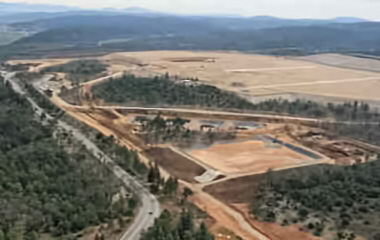The Korean Atomic Energy Research Institute (Kaeri) has been awarded three contracts to develop technology related to tritium and waste handling at the international project to build a fusion reactor.
 |
| Iter site: good to go (Image: Agence ITER France) |
The three projects announced by Kaeri are worth in total about €409,000 ($578,000). The first involves research into technology to analyse tritium contained in waste from the fusion reactor. The second project covers the design of a tritium transport container, while the third involves researching methods for the remote handling of wastes.
Iter, a 500 MWt tokamak, is to be built at Cadarache in France as a cooperative project between China, the European Union (EU), India, Japan, Russia, South Korea, and the USA, with the EU and France contributing half of the €12.8 billion ($18.7 billion) total cost and the other partners putting in 10% each. Work to clear and level the 42 hectare site was completed in April and pre-excavation work for the tokamak building is scheduled for this year. The first concrete for the buildings will be poured in 2010.
| Fuelling fusion Iter will generate energy by fusing together two different isotopes of hydrogen – deuterium and tritium – to produce helium. Deuterium is present and easily extracted from all forms of water. Tritium is a fast-decaying radioactive isotope and much less abundant, but is required in very small quantities in a fusion reactor. However, it can be produced in the fusion reactor itself by the interaction of neutrons with a lithium 'blanket'. Tritium 'breeding' will be one of the concepts under investigation at Iter. Although the fusion process itself does not produce radioactive waste products, components that come into contact with neutrons from the plasma in which the fusion takes place can become contaminated by neutron activation, and can also become contaminated with tritium. |
Iter is to be built and commissioned by a phased process, with major components of the machine such as the magnets and the vacuum vessel being assembled and tested prior to their progressive installation. The work to produce components and materials for the project is also being carried out internationally: recent contracts have included one with Russia's Kurchatov Institute to supply vacuum vessel ports for the reactor, and another with South Korea's Kiswire Advanced Technology (KAT) for production of niobium-tin (Nb3Sn) wire for Iter's toroidal field magnets.
Iter is scheduled to begin operating with hydrogen in 2018, but operation using deuterium and tritium fuels is not due to begin until 2026.





_63865.jpg)
_18570.jpg)
_16159.jpg)





